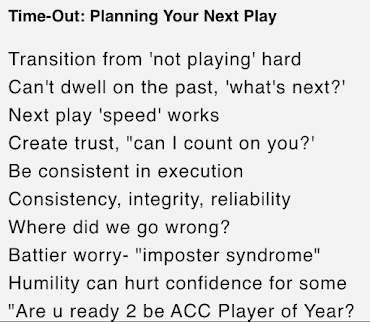Former Patriots' assistant Mike Lombardi, author of Gridiron Genius discusses leadership. He pulls no punches.
Preview:
- Do we have a well-constructed philosophy and structure?
- Can we teach it?
- Are we effective communicators getting buy-in?
- Can we objectively analyze our performance?
Selected notes:
"There's a fine line between learning and working..."
"Football...similar to chess...requires study of prior games that have been played."
"In football (playing) you see one side of the game...you have to learn both sides."
"You don't want to be old-fashioned in the League."
***"Coaching is leadership." Great coaches have at least three of four.
1) Management of attention (Philosophy and Structure)
2) Management of meaning (The Explanation clearly and concisely)
3) Management of trust (Consistency within the organization)
4) Management of self (Self-critical of mistakes and lack of effectiveness)
We could restate at PLAN, TEACH, TRUST, REFLECT and divide the first two items as 'system structure' and the latter two as inter/intra-personal.
If you don't have a clear system (philosophy) sustaining leadership will be difficulty.
You can play third base on any team and the positions are the same. Playing offensive line varies from team to team.
"A philosophy should transcend time...standards, beliefs, and principles must be time-tested."
"There's a difference between CHANGE and MODIFY."
Search for players by what you want and need. "Scouting is about eliminating players." Eliminate ones that don't fit what you do.
Groupthink means "nobody's thinking."
"Why would you get away from something that's been successful?" but things change (advent of the computer age)
"If you don't like change, you're going to like irrelevance even less." - General Eric Shinseki
"This is what we're going to do to win this game..."
Don't overinvest on what happened last week...
Questions on Mondays:
1) Why did you win?
2) Why did you lose? (Stop doing those things.)
Understand how you want to play...and implement...
"What is urgent and what is important?"
Lagniappe (something extra).
Lagniappe 2. How is our player and ball movement?















